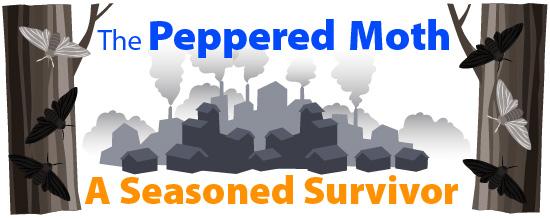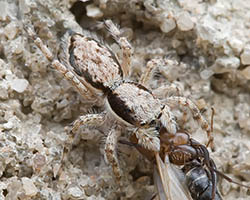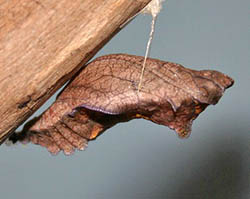show/hide words to know
Mimic: to copy or imitate the way something, looks, walks, talks, sings, or moves... more
Camouflage in Nature

A male soldier sneaks through a field using the camouflage provided by his ghillie suit.
The soldier pulls on her ghillie suit and walks into the field. She lays down in the grass and disappears. Is she still there? Of course. But can you see her? No. When our brave soldiers in the military wear camouflaged clothing in battle, they use the same tricks that animals use to blend in.
Camouflage is an adaptation that helps an organism blend in with its surroundings. Blending in helps the animal avoid predators and increases its ability to survive. Camouflage in the animal kingdom works in various forms. Organisms may use their ability to blend in for different reasons, but ultimately it helps an animal to survive and reproduce.
Different Forms and Uses of Camouflage
Camouflage isn't just about color. True, it may be a pattern on an animal’s coat or wings that lets it blend in. But it could also be the ability of an animal to mimic something else. Camouflage also includes coloration that is noticeable, but makes a body outline difficult to see.
Usually, animals that use camouflage mimic things a predator won't notice, such as plants or rocks.
Another form of camouflage is disruptive coloration. This occurs when an organism stands out against its surroundings, but has colors that break up its outline. Many animals have stripes or spots that help them to blend together when in groups. This makes it difficult for a predator to detect just one of these animals.

Camouflage helps this leopard get close to its prey. Image by Greg Willis.
Additional images via Wikimedia Commons. Leaf-tailed gecko ("Uroplatus ebenaui 3") by Alextelford.
View Citation
Bibliographic details:
- Article: Camouflage in Nature
- Author(s): Ronald Rutowski, Sean Hannam
- Publisher: Arizona State University School of Life Sciences Ask A Biologist
- Site name: ASU - Ask A Biologist
- Date published: August 5, 2015
- Date accessed: April 17, 2024
- Link: https://askabiologist.asu.edu/camouflage-nature
APA Style
Ronald Rutowski, Sean Hannam. (2015, August 05). Camouflage in Nature. ASU - Ask A Biologist. Retrieved April 17, 2024 from https://askabiologist.asu.edu/camouflage-nature
Chicago Manual of Style
Ronald Rutowski, Sean Hannam. "Camouflage in Nature". ASU - Ask A Biologist. 05 August, 2015. https://askabiologist.asu.edu/camouflage-nature
Ronald Rutowski, Sean Hannam. "Camouflage in Nature". ASU - Ask A Biologist. 05 Aug 2015. ASU - Ask A Biologist, Web. 17 Apr 2024. https://askabiologist.asu.edu/camouflage-nature
MLA 2017 Style

Leaf-tailed geckos not only have tails that resemble leaves, their skin also has a pattern that resembles dead leaves or tree bark.
Be Part of
Ask A Biologist
By volunteering, or simply sending us feedback on the site. Scientists, teachers, writers, illustrators, and translators are all important to the program. If you are interested in helping with the website we have a Volunteers page to get the process started.










